Alumni and Friends – Select Alumni Profiles
 Dr. Dan Sullivan
Dr. Dan Sullivan
Vice President, System Engineering & Technology, Hughes Communications.
What would cause someone to take more graduate courses in Electrical Engineering than any other student in the history of the University of Southern California?
“I’ve been in the satellite business from the beginning,” answers Dan Sullivan. “The USC curriculum in Electrical Engineering has always been oriented toward that set of technologies that are growing; communications is one of those.”
Sullivan first attended USC on the Hughes Masters Fellowship program. Like many of the leading firms in Southern California, Hughes Aircraft Company offered on site work-study programs to its employees enabling them to gain the training they need to stay abreast, and move ahead, in a rapidly changing business environment.
Holding the record of 115 units in graduate level coursework, Dan Sullivan is the former Vice President and General Manager in the Space Communications Division of TRW Space and Defense. Now a Vice President at Hughes Communications, he is providing technical leadership of new business activities for the telecommunications services business unit of Hughes. His work includes the preparation of business plans and synthesis of advanced systems to provide satellite communication services world-wide.
“If you look at the big companies around here,” Sullivan points out, “you can literally point at the VPs and the other guys who run these companies. Many of them came out of the USC Electrical Engineering Department. That’s certainly true of the management structure here at Hughes.”
Dr. Diana Marculescu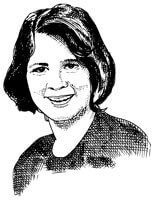
“I came here from Romania to get my PhD in computer engineering. I wanted to do my studies at a very good university and USC is internationally recognized in computer engineering. When I got into doing research, I knew I had made the right choice. I really liked what I was doing and USC offered an excellent environment for research- oriented activities.”
Diana Marculescu received an MS in Computer Science from the Polytechnic Institute of Bucharest, Romania. As a PhD candidate in Computer Engineering at USC, Diana was part of a DARPA-sponsored team effort to develop a software program called Power Optimization and Synthesis Environment (POSE). Her doctoral dissertation, Information-Theoretic and Probabilistic Measures for Power Analysis of Digital Circuits, tackles the fundamental estimation problems that must be solved in the implementation of POSE. Diana successfully defended her thesis and joined the faculty of the University of Maryland in the fall of 1998.
Over a hundred universities and companies have availed themselves of the POSE software, which is available free over the internet.
Dr. Fred Cohen
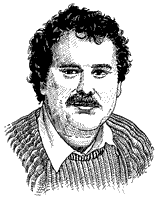 Principal Member, Technical Staff, Sandia National Laboratories, Livermore, CA.
Principal Member, Technical Staff, Sandia National Laboratories, Livermore, CA.
“There are a couple of things that made studies at USC stand out. One was that the technical content was extremely strong. That is, they told me everything I needed to know all the way down to the bottom.”
Credited with being the first to demonstrate computer viruses and the inventor of most of the virus defenses in use today, Fred Cohen received his PhD in Electrical Engineering in 1986 from USC. The first person to write scientifically about computer viruses, his discovery and thesis work on viruses resulted from a course he took in cryptography. Dr. Cohen has authored several widely-distributed books on computer security, including A Short Course on Computer Viruses and Protection and Security on the Information Superhighway, both published by Wiley and Sons.
From various positions as a university professor, Dr. Cohen moved on to become President of a company called The Radon Project, the Chairman of All Things Incorporated, Senior Scientist with SAIC, Inc., and Managing Director of Fred Cohen and Associates before joining Sandia National Laboratories in 1996.
“USC had the ability to combine quality education with a reasonable human viewpoint on the world. And I think that is a very good thing.”
Diane Ridgley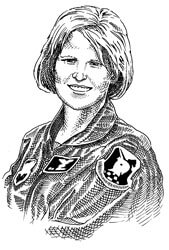
United States Airforce Pilot.
In the United States Air Force, only 600 pilots qualify to fly the service’s elite A-10 fighter aircraft. Of those 600 pilots, just five are women. And of that five, one is USC graduate Diane Ridgely.
“I went through the Air Force ROTC program at USC when I was getting my bachelors degree. But right before I graduated I got a letter saying they couldn’t send me to pilot training for another year. So I went to graduate school and got my masters degree during that year in Electrical Engineering,” Diane remembers. During that time, Diane assisted Prof. Jonckheere in his research on thrust-only control of aircraft.
After graduation, Diane went immediately into pilot training at Reese Air Force Base in Lubbock, TX. “They do it like a draft pick, ranking you out of your class on your performance. They only have so many available aircraft and when they call your name, you stand up and pick your jet. I ended up doing really well and picked the A-10.”
Diane underwent further training in A-10s at Davis Monthan Air Force Base in Tucson, AZ where she ranked as the top academic performer in her class. Now stationed at Moody Air Force Base in Remerton, GA, she credits much of her success in an intensely competitive field to the education she got at USC.
“Interestingly enough, what’s helped me the most in my career has not been so much the information I learned. It’s been the way I learned and the type of questions I learned to ask. And, maybe even more importantly, I learned from my professors that you don’t always get things the first time and it’s only by being persistent that you get what you want and need in life.”
The MacCalla Family
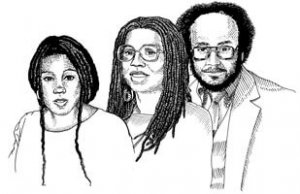 Years ago with Stanford masters degrees in hand, Eric and Johnetta MacCalla joined Hughes Aircraft Company as Hughes Doctoral Fellows and decided to attend USC in Electrical Engineering. Eric eventually earned his PhD with a thesis on the rapid acquisition of spread-spectrum signals, and Johnetta completed hers with a thesis on multivariate control of nonlinear systems.
Years ago with Stanford masters degrees in hand, Eric and Johnetta MacCalla joined Hughes Aircraft Company as Hughes Doctoral Fellows and decided to attend USC in Electrical Engineering. Eric eventually earned his PhD with a thesis on the rapid acquisition of spread-spectrum signals, and Johnetta completed hers with a thesis on multivariate control of nonlinear systems.
Along the way, Ayanna MacCalla was born into this engineering family. She first started programming on her computer in third grade. After her sophomore year in high school, she became the youngest person to attend the Summer Research Program on the USC campus. When time came for graduate work, Ayanna MacCalla Howard chose USC and was awarded an All-University Pre-Doctoral Fellowship.
“I researched good institutions in order to study electrical engineering and USC was one of the best ones. The professors here are really good. You learn stuff. I haven’t been in a class yet where I’ve been lost and wondering what’s going on. You can understand them. You can go talk to them. And they’re pretty flexible. So coming to USC was refreshing. I learned new things and I can actually tell you what I learned in my classes.”
Today, Ayanna MacCalla Howard is an Information Systems Engineer at the Jet Propulsion Laboratory in Pasadena and also works as an Executive Programmer for Axcelis, Inc., Seattle WA. She is pursuing her PhD degree at USC in Electrical Engineering with a concentration in Artificial Intelligence and Robotics.
“Right now robotics doesn’t take into account objects that deform. It mainly deals with rigid objects like boxes or electronic components. But in the real world at least 50 per cent of objects actually change shape, especially in the household. I’m working on getting robots to learn how to grasp deformable objects like pillows and other things that squish.”
As for her proud parents, Eric and Johnetta are in their eighteenth year as founding owners of Automated Switching and Control, Inc. This company’s latest success is being pre-qualified as system integrators for the Bay Area Rapid Transit District connections to San Francisco’s International Airport.
Peter Lai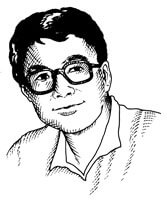
Project Manager, Industrial Technology Investment Corporation, Taiwan
“This job requires good comprehension of science and technology. You have to pick up information in a short time and ask the critical questions.
Most of the time I think what matters is not how much you know but how you get to know things. My PhD study at USC gave me excellent training for this. My advisor showed me how to derive everything from first principles, how to find out the reasons behind the phenomena, how to figure out the problems, and to point out the bottom line.”
Peter Lai received his PhD in 1997, performing his thesis research on the electromagnetic accordion. This work led to a patent on pulsed high-power radiation (which he co-owns with his advisor and his UCLA collaborators) and stimulated his interest in entrepreneurship. This interest eventually led to his current position as Project Manager for Industrial Technology Investment Corporation, Taiwan, venture capitalists investing in high-tech start-up companies.
“My education at USC provided me a good foundation and I believe it will become more and more valuable as time goes on.”
Victor Boyadzhyan
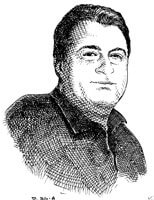 The VLSI/IC research program with its areas of expertise in electro-optic materials and devices, analog and digital integrated circuit design, and micro-fabrication techniques, matched the research interests of Victor Boyadzhyan.
The VLSI/IC research program with its areas of expertise in electro-optic materials and devices, analog and digital integrated circuit design, and micro-fabrication techniques, matched the research interests of Victor Boyadzhyan.
A PhD candidate in Electrical Engineering specializing in solid-state and integrated electronics, Boyadzhyan also works at NASA’s Jet Propulsion Lab- oratory in Pasadena. His current research interests focus on developing microsensors (e.g., tunneling micro-accelerometers, uncooled infrared detectors, micro-gravimeters) with integrated on-chip control electronics to be incorporated in flight avionics applications.
One micro- sensor that Victor is designing is an automatic tunneling-current-controlled Golay cell which is designed specifically for sensing infrared radiation indicative of the concentration of glucose in blood. Its low noise, high gain, and low power consumption also make it attractive for other infrared-sensing applications. The basic principle of Golay cell operation is exploited to measure the gas pressure within a membrane of a micromachined electromechanical device. Preliminary test results show that this micro-mechanical device has considerable potential utility because of its ‘uncooled’ principle of operation, unlike conventional IR detectors which must operate at cryogenic temperatures.
“I do not think that I would have been able to find a research group anywhere else that could offer me the capability to do this work,” Boyadzhyan claims.
Dr. Steven DenBaars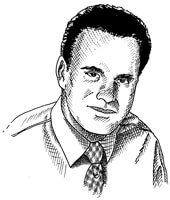
Associate Professor, Materials and Electrical Engineering Departments,
University of California, Santa Barbara.
“Dynamic professors. And very good facilities. That’s what people should look at. When I was looking at various campuses, USC gave me the most personal treatment. I actually got to talk to the professors!”
Now a professor himself at UC Santa Barbara, Dr. Steven DenBaars credits his graduate experience at USC as one of the best in his life. “The networks you establish in graduate school and the friendships you make carry on into the rest of your life. They have been very beneficial to me.”
Professor DenBaars’ current interests lie in metalorganic chemical vapor deposition (MOCVD) of III-V compound semiconductor materials and devices. His work has produced a new light emitting material that emits blue wavelengths. “I learned the MOCVD growth technique that I employed in the achievement of a blue laser during graduate studies at USC. Prof. Dapkus is the pioneer in this field. Since my days in graduate school the MOCVD technique has gone from being primarily a research tool, to the point where now it is the dominant technology used in the fabrication of optoelectronic devices, such as CD player lasers, solar cells, and LEDs.
“Blue has been the missing color for displays made on semiconductors. For twenty years, we have had red LEDs or green LEDs, but never the color blue. This gives you the ability to make full color displays because you now have blue light. And you can also make compact discs hold much more information, up to ten times more, just by going to blue because blue can be focused on a very fine spot.”
The research being done by Professor DenBaars has led to the first US university demonstration of a Blue GaN laser diode and over seven patents pending on GaN growth and processing. Dr. DenBaars is the lead investigator of the ARPA-funded Multi-University Nitride Consortium which will develop and transfer GaN technology to industry.
Published on July 22nd, 2016
Last updated on August 2nd, 2023

